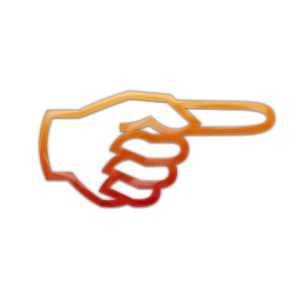| Benign Testicular Tumor – Definition |
What is the benign testicular tumor?
Traditionally some 95% of solid testicular swellings are held to be malignant. Nevertheless, it has been suggested that benign testicular tumours may be more common than suspected, most of the patients reported having had granulomatous orchitis, tuberculosis, or epidermoid cysts. More than 95% of benign testicular tumours arise from the germ cells. Benign testicular germ cell tumours can be subdivided into seminoma and non-seminomatous germ cell tumours (NSGCTs).1 Of the germ cell tumours, about 45% are seminomas and 50% are non-seminomas. The non-germ cell tumours include Leydig cell tumours, Sertoli cell tumours and sarcomas. Since the introduction of combination chemotherapy in the 1970s, survival rates for malignant testicular cancer have risen every year to cure rates of over 95%.
| Benign Testicular Tumor – Risk Factors |
What is the risk factors of benign testicular tumor?
Risk factors include:
- Cryptorchidism or testicular maldescent.
- Klinefelter’s syndrome.
- Family history.
- Male infertility (increases risk by a factor of three).
- Low birthweight, young maternal age, young paternal age, multiparity, breech delivery.
- Infantile hernia.
- Height – taller men are more at risk of developing germ cell tumours.
- Testicular microlithiasis (small intratesticular calcifications seen on ultrasound).
Of the factors associated with the risk of developing germ cell tumours of the testis, cryptorchism and malignancy in the contralateral testis are by far the strongest.
| Benign Testicular Tumor – Symptoms and Signs |
What is the symptoms and signs of benign testicular tumor?
Symptoms
- Painless lump; see separate article Lumps in the Groin and Scrotum.
- Testicular pain and/or abdominal pain.
- Dragging sensation.
- Recent history of trauma; it is probably the trauma that leads the man to examine himself and find the tumour rather than being the cause of malignant change.Hydrocele
- Gynaecomastia from beta human chorionic gonadotrophin (beta-hCG) production.
- Metastasis – seminomas metastasise to para-aortic nodes and produce back pain; teratomas undergo blood-borne spread to liver, lung, bone and brain.
Signs
- A lump is palpable in nearly all cases.
- Whereas the normal testis is rather delicate and the inflamed testis is very tender, the malignant testis tends to lack the normal level of sensation.
- Lymphatics from the scrotum drain to the inguinal nodes but from the testes they go deeper. Hence, inguinal lymph nodes are unlikely to be enlarged.
Patients presenting with a swelling in the scrotum should be examined carefully and an attempt made to distinguish between lumps arising from the testis and other intrascrotal swellings. An ultrasound scan should be performed to make a distinction.
| Benign Testicular Tumor – Diagnosis |
What is the diagnosis for benign testicular tumor?
Diagnosis should not delay referral. Patients should be referred urgently to be seen within two weeks if malignancy is suspected and its incude:
- Diagnosis is usually confirmed by ultrasound.
- Tissue histology can follow an inguinal orchidectomy.
- Disease can be staged by thoraco-abdominal CT scanning.
- Tumor markers are useful in staging and assessing response to treatment:
- Alpha-fetoprotein (AFP) is produced by yolk sac elements but not produced by seminomas.
- Beta-hCG is produced by trophoblastic elements and so there may be elevated levels in both teratomas and seminomas.
- Lactate dehydrogenase (LDH) should also be measured, especially in advanced tumors
| Benign Testicular Tumor – Treatment |
How are testicular tumors treated?
Testicular tumors, whether benign or malignant, are usually removed along with the entire affected testicle in a procedure known as orchiectomy. If the tumor is malignant, it also need to receive one or more of the following treatments:
Chemotherapy– a drug treatment that works by interfering with the benign tumor cell’s ability to grow or reproduce. Different groups of drugs work in different ways to fight tumor cells and shrink tumors. Chemotherapy may be used alone or in conjunction with other therapy.
Chemotherapy is a whole-body treatment. It can be given:
- as a pill to swallow,
- as an injection into the muscle or fat tissue
- intravenously (directly to the bloodstream; also called IV)
- intrathecally (directly into the spinal column with a needle)
While chemotherapy can be quite effective in treating certain benign cancers, there can be many side effects, since the agents don’t distinguish between healthy cells and benign cancer cells. Being able to anticipate these side effects can help you and your care team prepare, and, in some cases, prevent or alleviate symptoms.
Radiation therapy– a treatment using high-energy rays (radiation) from a specialized machine to damage or kill benign and malignant cancer cells and shrink tumors.
Supportive care – treatment to prevent and treat infections, alleviate side effects of treatments, reduce complications and keep him comfortable during treatment. He will also be placed on a schedule of continual follow-up care to monitor ongoing response to treatment and possible late effects of treatment.
| Benign Testicular Tumor – Chinese Herbal Treatment by Malaysia Chinese Master |
What about treatment with Chinese herbal medicine?
The traditional Chinese herbal medicine and acupuncture techniques can only reduce the size of the cancer cells and prolong the life of a cancer patient. According to the research of Malaysia Chinese Master, the herbal medicines used are free from any harmful side effects to patients. Thus, if a patient in a manner that herbal medication and follow the advice of the Chinese Master, may the disease will be reduced.
Chinese Master uses a so-called Sabah Snake Grass cancer herbs or also known as “Yu Xun Cao”, it has been widely used in Malaysia and other Asia countries to treat dampness, heaty conditions, cancer, tumors, uric acid, gout, urinates renopathies (disease of the kidney) and uterine fibroid.
Sabah Snake Grass in traditional Chinese cancer herbs medicine for over thousands of years, is usually decoction into herbal drink together with other types of herbs to treats diseases mentioned and uremia for kidney patient primarily and to reduce of urine toxic.
Patient can contact Chinese Master to get some advice on how to take/ how much to take to treating you cancer. Some patient have bad side effect such as weakness leg, bed wetting, and other,after taken Sabah Snake Grass themselves without any advice or guides from specialist. Side effect occur because the patient have a ‘cold’ body system and take too much of Sabah Snake Grass. Chinese Master can help to adjust the doses of Sabah Snake Grass or combines Sabah Snake Grass with other herbs to balance the Qi inside your body system.
The recovery rates depends on the grade, stages and types of cancer, the location cancer, the size of cancer,how long that cancer are happen and also age and patients general health. So, it’s up to you to choose the appropriate treatment to treat the disease but preferably it should be remembered come meet with Chinese Master early so that the disease can be controlled before spreading to other organs. Chinese Master used to say, “Where there is desire, there is a way …”
 |
Search Alternative Acupuncture Treatment by Chinese Master in Google search here |

